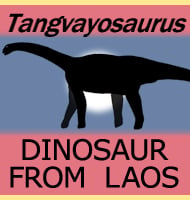Pararhabdodon
In Depth A poorly known genus of hadrosaurid dinosaur, Pararhabdodon fossils were initially thought to be from a species of the genus Rhabdodon. New study resulted in the establishment of a new genus, Pararhabdodon, with the description being based upon the caudal (tail) vertebrae. Early fossil assignment for the genus was mostly vertebrae with a … Read more
